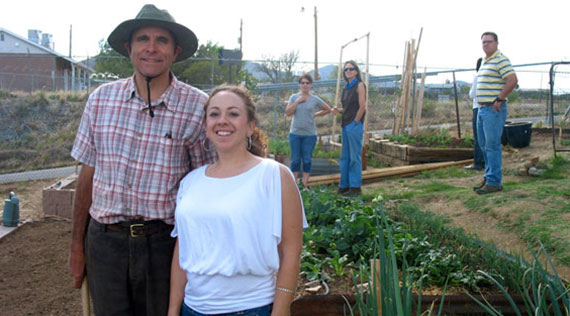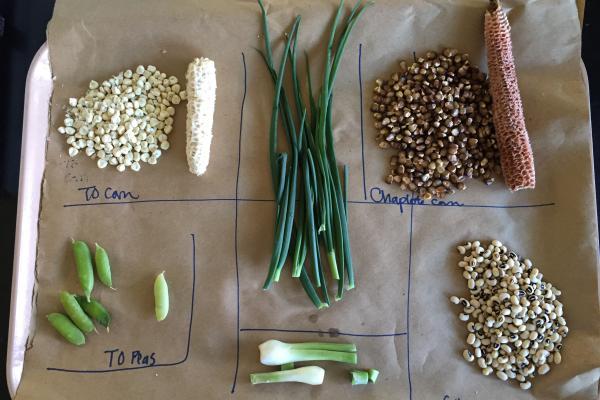Dr. Ramirez-Andreotta spent a Saturday afternoon this April talking about environmental health justice and community gardening at the UA Biosphere II in Oracle, Arizona.
We are in the news.

Our congratulations to Dr. Mónica Ramírez-Andreotta, Research Translation Core Director for the University of Arizona Superfund Research Program (UA SRP), who recently received a $2.26M Advancing Informal Science Learning Program Grant from the National Science Foundation. The grant is entitled: “Building a Co-Created Citizen Science Environmental Health Project with Underserved Communities”. Ramírez-Andreotta will work with a team of researchers from the University of Arizona (Dr. Leif Abrell, Arizona Laboratory for Emerging Contaminants; Dr. Jean McLain, Department of Soil, Water and Environmental Science - SWES / Water Resources Recearch Center and Dr. Rob Root, SWES, Environmental Biochemistry Group) and the Sonora Environmental Research Institute, Inc. (Dr. Aminata Kilungo). The 5-year grant began September 15, 2016.
The research group will train historically underrepresented populations residing in environmentally compromised areas of Arizona, both urban and rural, on how to monitor the quality of their harvested rainwater, garden soil, and home garden crops. The project aims to: (1) co-produce environmental monitoring exposure and risk data that will be relevant to the participant's lives; (2) increase the community’s involvement in environmental decision-making; and (3) improve environmental health education and literacy in these underserved communities.
According to Ramírez-Andreotta, “A missing element in environmental education programs is a concerted effort by communities, organizations, government, and academic stakeholders to build meaningful partnerships and cultivate informal science learning opportunities via public participation in environmental research. This not only makes scientific information more readily available, it also engages community members in the process of scientific inquiry, synthesis, data interpretation, and the translation of results into action.” In order to build trust and make sure that the citizen science data directly informs environmental policy, the project team will build a multi-stakeholders advisory board. While community members are collecting samples, Ramirez-Andreotta and her team will assess the learning and action-based outcomes of the project and how a citizen science and community-engaged approach affects informal science learning (learning that occurs outside the classroom) in underserved communities.
The UA SRP is excited to support Ramírez-Andreotta in this important effort
More News
University of Arizona Superfund Research Program (UA SRP) Research Translation Core (RTC) investigator, Dr. Monica Ramirez-Andreotta, has been making waves since returning home to take a faculty position at her alma mater, the University of Arizona, last year. Ramirez-Andreotta is a transdisciplinary environmental health scientist who specializes in the fate and transport of contaminants in plant-soil systems, research translation, and community engagement efforts. Within this last year, she has received a number of city, state, international, and foundation grants to support her burgeoning research program.
Dr. Mónica Ramírez-Andreotta has been a part of the University of Arizona Superfund Research Program (UA SRP) since 2005, first as Research Translation Core Coordinator, and then as a Training Core Fellow earning her PhD in 2012. She then left to train as a post-doc and become Assistant Professor of Health Sciences at Northeastern University in Boston, MA working in the Social Science Environmental Health Research Institute there. In 2015 Ramírez-Andreotta returned to the UA as an Assistant Professor in the Department of Soil, Water, and Environmental Science, and she continues to collaborate with UA SRP with seed funding from the Center for Environmentally Sustainable Mining. Following the success of her dissertation project, Gardenroots: The Dewey-Humboldt AZ Garden Project, Ramírez-Andreotta has continued her work investigating the uptake of metals by edible plants.


